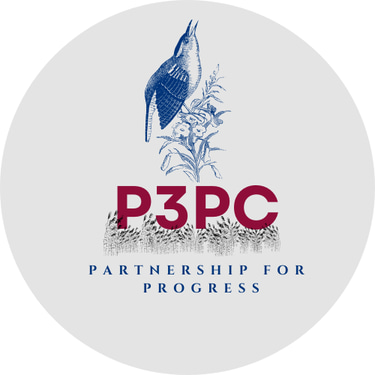Geopolitics of Doing the next right thing
I didn't think I would ever be making progress like this!
James Murphy
10/13/20253 min read


The New Geopolitics of Impact: Why Unilever Cares About an Old Factory in South Carolina
Welcome back to the P3PC blog. We’ve discussed data governance and social equity, but today we’re talking about the biggest money trend shaping cities, states, and even rebuilding nations: the convergence of global finance, corporate purpose, and local development.
The question isn't whether your city needs money for redevelopment; it's why a global corporation like Unilever would be interested in funding your local land preservation project or Opportunity Zone.
The answer lies in the radical evolution of corporate social responsibility (CSR) into verifiable, purpose-driven Impact Investing.
From CSR to IMPACT: The New Corporate Mandate
For decades, Corporate Social Responsibility (CSR) was often confined to philanthropy, driven by marketing and public relations. Today, that has fundamentally changed.
ESG (Environmental, Social, and Governance) criteria now measure a company's systemic risk and long-term viability. It is the framework investors use to grade performance.
The new focus is IMPACT. Post-UNGA discussions confirm this trend: Investors, Family Offices, and large corporations are demanding projects that generate measurable financial returns alongside positive, quantifiable social or environmental results, often directly tied to the UN Sustainable Development Goals (SDGs).
The key shift is from "What is the output?" (e.g., We donated $1 million) to "What is the outcome?" (e.g., Our investment reduced carbon emissions by X tons and created Y living-wage jobs).
The SDGs and Conscious City Development
Conscious City Development is the concept of leveraging technology and integrated planning to align local economic goals with global sustainability standards. It's the mechanism that makes a local project globally fundable.
For a municipality looking to rebuild a region, repurposing a manufacturing base and combining it with land preservation is not just local planning; it’s a powerful investment package that targets multiple SDGs:
SDG 9: Industry, Innovation, and Infrastructure: Redeveloping brownfields into innovation hubs.
SDG 11: Sustainable Cities and Communities: Creating resilient and inclusive urban spaces.
SDG 13 & 15: Climate Action and Life on Land: Preservation efforts and green infrastructure.
This is the language of global capital, and it is the language that makes a company like Unilever take notice.
The Unilever Case Study: Carbon Credits and Ecosystem Resilience
Consider our example: A municipality in Upstate South Carolina wants to take an old manufacturing facility, convert it into a mixed-use commercial center (perhaps an Opportunity Zone), and permanently preserve a large tract of adjacent, forested land. It needs significant funding.
Why is this appealing to Unilever?
Nature & Climate Goals (Scope 3 Emissions): Unilever has ambitious targets to reach net zero emissions across its value chain by 2039 and must help protect and restore 1 million hectares of natural ecosystems by 2030. A significant portion of its carbon footprint comes from its supply chain—known as Scope 3 emissions, specifically from Forest, Land, and Agriculture (FLAG).
The Investment Mechanism: By funding the land preservation portion, Unilever can potentially secure high-quality, verifiable carbon credits or in-setting credits that directly offset its FLAG-related Scope 3 emissions. This is not philanthropy; it’s a strategic investment that helps them hit mandatory internal and investor-facing ESG targets.
Regenerative Ecosystems: The investment can be tied to supporting resilient and regenerative natural ecosystems, which aligns with their broader commitment to sustainable sourcing and agricultural practices.
Local Livelihoods: The repurposed manufacturing base project simultaneously hits Unilever's "Livelihoods" goal by promoting job creation and economic growth in the retail value chain, making the investment holistic.
This Public-Private Partnership (PPP) is a win-win: The municipality secures funding, and the corporation efficiently and measurably hits its ESG metrics.
The New Role of Public-Private Partnerships and Family Offices
This level of integration requires sophisticated infrastructure:
Family Offices and Impact Investing: Family Offices, which manage ultra-high-net-worth assets, are increasingly moving beyond traditional charity into direct impact investing. They are seeking projects that align with their legacy goals (e.g., environmental protection or healthcare access) and value the long-term, regenerative nature of municipal/redevelopment projects.
The Technology Enabler: Technology platforms are essential for corralling this complex capital and measuring impact. Companies that specialize in ESG and CSR—like those that offer tools for social impact data reporting and employee engagement—are crucial. These tools make it easy to track a project's real-world outcome metrics, allowing companies to prove to investors and regulators that their capital is truly fueling social impact and making it easier to match funding efforts to "sticky" employee giving programs.
The era of transactional CSR is over. The new game is one of radical alignment, where a multinational corporation's sustainability goals directly fund a local community's vision for a healthier, more resilient future. For cities and states rebuilding their economies, understanding the ESG mandate is the key to unlocking the next generation of private capital.
🔥 SNEAK PEEK for Next Week! 🔥
We’ve seen why the money flows. Next week, we look at the Hyper-Local Imperative: How businesses must translate global ESG goals into tangible, ground-level programs by partnering directly with local government and non-profits. Get ready to connect purpose to profit!
Stay tuned!
Connect
Partnering for a better Municipalities everywhere.
#IMPACT
#SmartCommunity
© 2025. All rights reserved.
